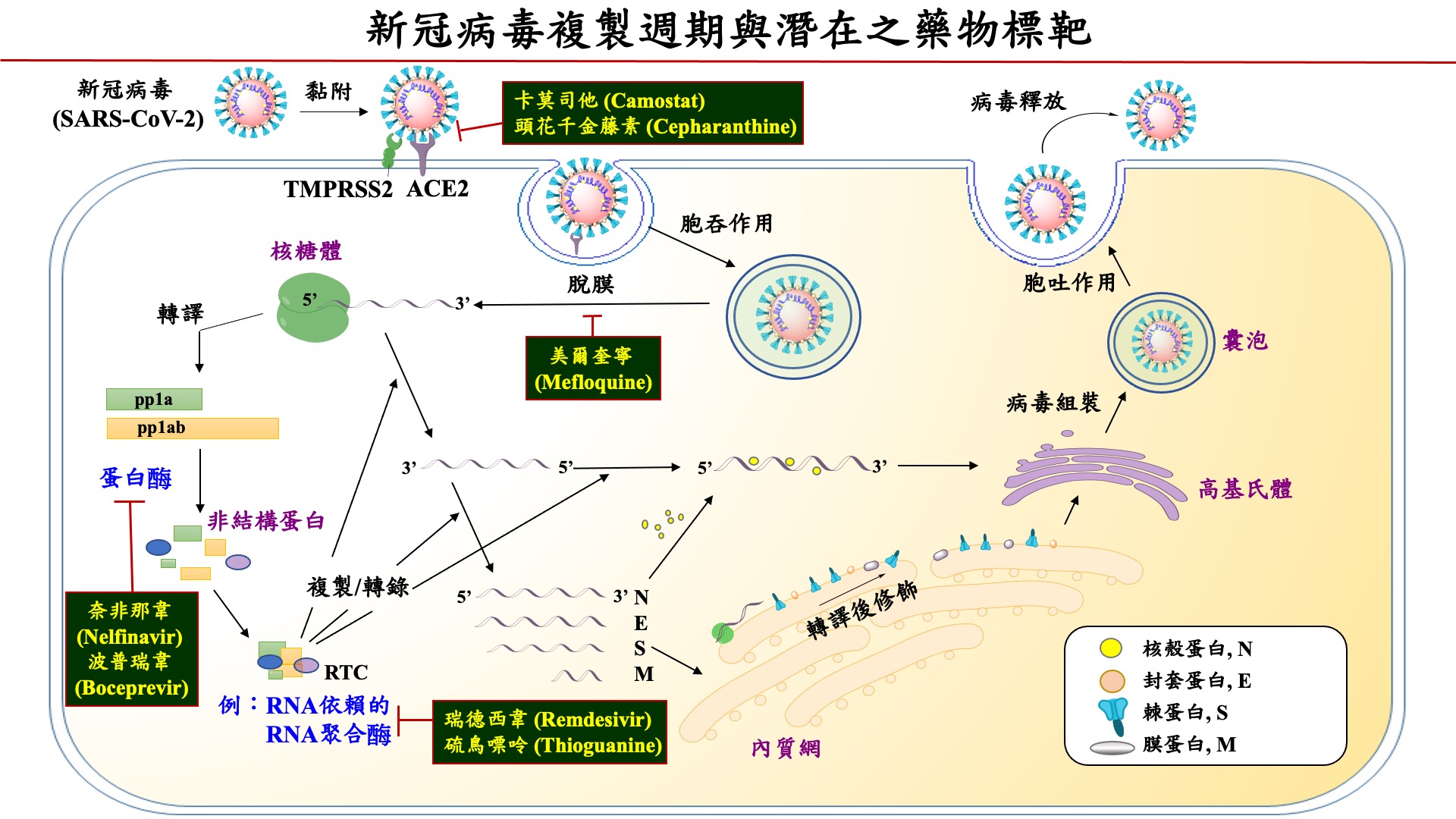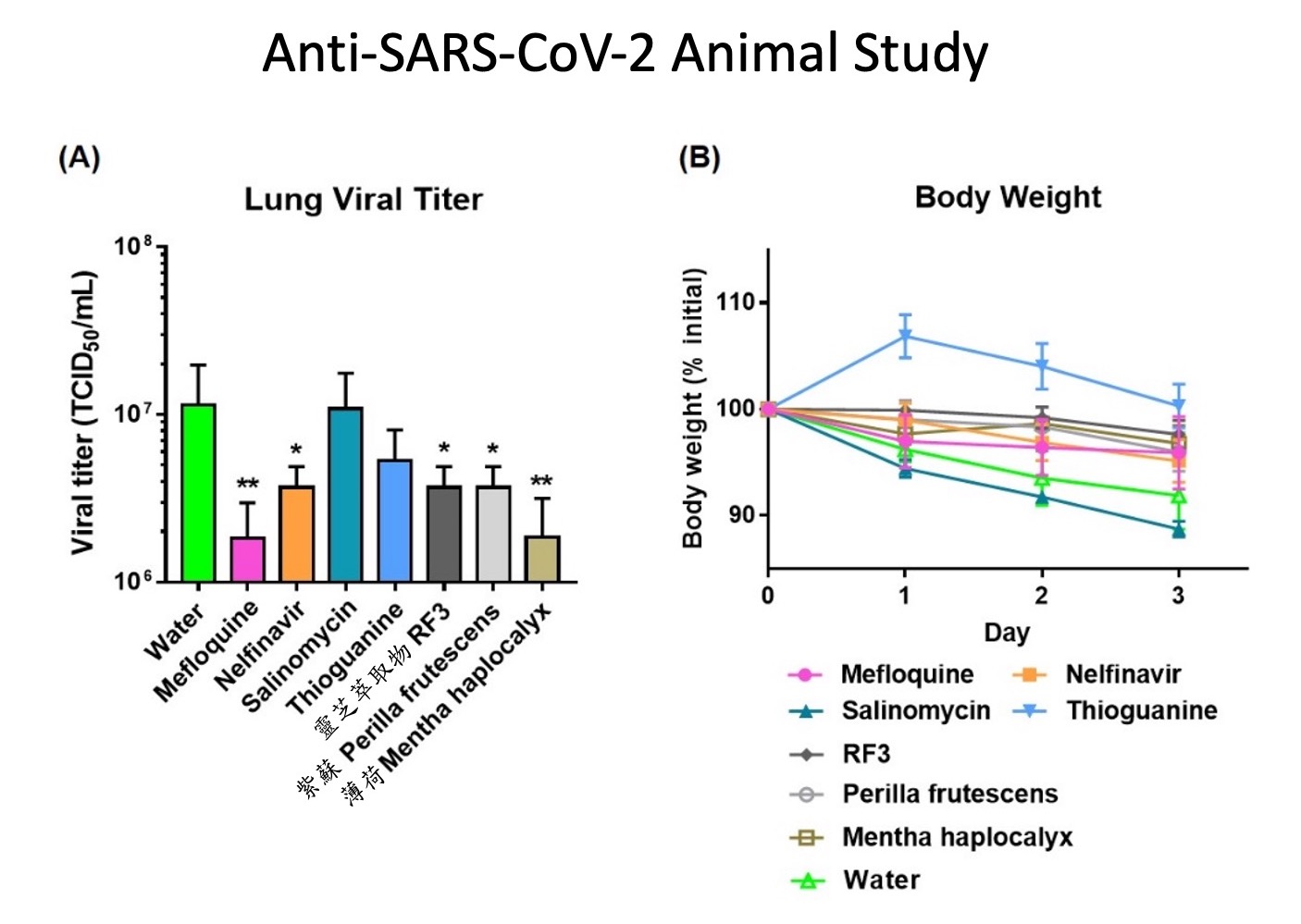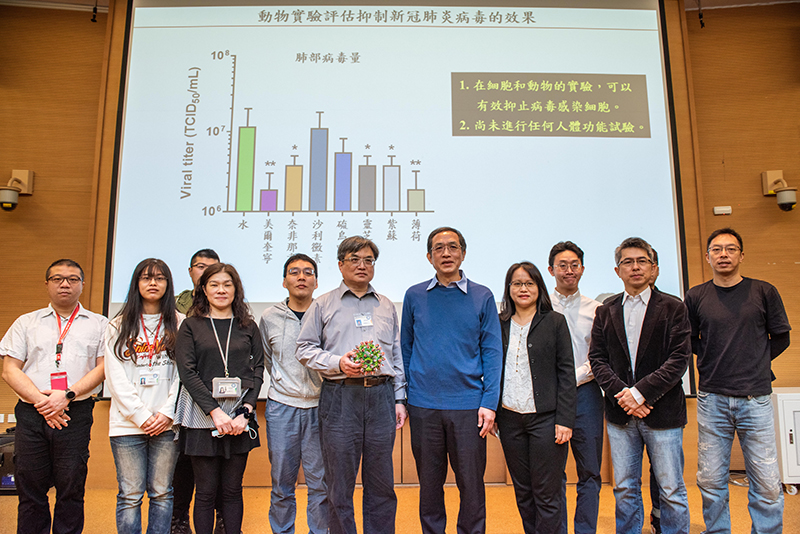SARS-CoV-2 definitely dominates the worldwide attention in year 2020, the pandemic has taken more human lives than many other major historical pandemics, and it does not have a sign to be under control yet.
In February 2020, while it was still unfamiliar to many parts of the world and did not have an official name, professor Chi-Huy Wong had publicly acknowledged the possibility of its potentially morphing into a flu-like characteristic. As a veteran who was leading the scientific research team in Taiwan to fight SARS in 2003, Wong noticed the behavioral differences of the two viruses, “SARS was ferocious so they disappeared quickly because most infected hosts died, and effective quarantine limited its chance to spread”, commented Wong, “However, COVID-19 has a milder approach, the death rate is not that high and symptoms vary, so it got away from the radar and spread unnoticed in early days.”
In April 2020, professor Shang-Cheng Hung, director of Genomics Research Center assembled all interested colleagues to a series brainstorm sessions, a decision was made to look through all existing medicines and supplments to find potential drugs to treat SARS-CoV-2 infections.
By examing 2855 small molecules, that is, all the approved and available drugs for human and animals in the world right now, plus close to 200 alternative Chinese herbal medicines, they narrowed the candidates down to five. Of the five, two are approved pharmaceutical compounds, and three are herbal medicines. The team has filed patent and published their study in the PNAS journal lately.
RNA-based viruses like SARS-CoV-2 have a common behavior — they mutate. One thing for sure is that the virus will be changing its genetics through the course of the pandemic. As a matter of fact, Dr. Cheng-Wei Cheng in Wong’s lab obtained the genome information from GISAID, created an computation model, and found out, of the 1273 spike proteins on the virus, more than 1000 mutations could happen. Such a data tells the team that efforts in creating vaccines utilizing traditional flu vaccines process would be a wild-goose chase, one can never catch up with the virus mutation speed.
“The fastest way to help ease the situation is to find any clinically available drugs that can be used to fight off the infection. And, it should be orally taken drugs that people can take themselves at home when positively diagnosed”, commented Wong.
By the help of the High Throughput Core Facility and P3 lab, the team used a cell-based infection assay and screened more than 3,000 existing drugs (2855 small molecules and 190 traditional herbal medicines). Originally, there were around 30+ candidates. Professor Pi-Hui Liang, from School of Pharmacy in National Taiwan University who was in the SARS team while working as a post doc in GRC in 2003, worked with the doctoral student Yu-Pu Juang and professor Chi-Huey Wong, together, they went through the screen result of each one of these candidates, and identified 15 with effective antiviral activity in concentrations ranging from 0.1nM to 50 μM that are suitable for further analysis.
Mr. Juang did an analysis and categorized these candidates into five therapeutic types, anti-viral, anti-cancer, anti-infection, anti-cystic fibrosis, and ion channel modulator. To determine at what stages during the life course of a Covid-19 virus do these various candidate drugs may function, the team went separate ways to dig into the details.

|
| SARS-Co-2 virus invades and replicates in human cells. Key steps of infections, includes entry, uncoating, replication, and assemble. In our high-through-put screening, we have identified several existing drugs that target these key steps and these drugs are labelled in red. |
Accordint to professor Liang, the COVID-19 virus is so slimmy that it tricks the TMPRSS2 enzyme in our body to help it get into our cells. Once inside, it carries its own protease and starts its replication in our perfectly provided cell environment. There are about 100 to 1000 viruese made inside one cell, and these viruses then break out to do more reproductions. It was observed that once a virus got into a live animal body, almost like no delay, cloned virus could be found inside the lung of the infected animal.
The team started off the work as senior research scientist Ting-Jen Cheng targeted the virus 3CL protease, which is a step that the virus creates building blocks for its reproduction; professor Jiun-Jie Shie worked on the RNA replication stage of the virus; Senior research scientist Ying-Ta Wu worked on computer simulation to provide a better understanding of the mode of actions between portease enzyme and drugs; professor Rong-Jie Chein synthesized thioguanine derivative to find out the mode of its inhibition; professor Wei-Chieh Cheng investigated the effect of glycosylation inhibition; and professor Che Ma provided antibodies as tools for selections.
As for the 190 herbal supplements and traditional medicines, Senior Research Scientist Jia-Tsrong Jan did cell-based screening. First of all, he prepared the extracts by using 20 ml boiling water with 1 gram of the medicine, soaked for 20 minutes. Then, in the P3 lab, he and Dr. Hsiu-Hua Ma tested all 190 extracts in various dilustions to see how they perform in viral infected cells. Several herbal medicines were found active with reduced viral infection in the cell-based infection assay.
To further evaluate the efficacy of these promising findings, they created an animal model. They used Golden Syrian hamsters and made them infected with SARS-CoV-2, then, orally given them the selected compounds and herbal teas twice daily. Lung tissues were examined after day 3.

|
| Anti-SARS-CoV-2 Animal Study |
The finals that showed promising came out to be: mefloquine, nelfinavir, and extracts of Ganoderma luciudum (RF3), Perilla frutescens and Mentha haplocalyx. Mefloquine, which is a drug to treat Malaria, and Mentha haplocalyx, which is commonly known as mint, are most effective in clearing the virus in the lungs. Nelfinavir is a drug to treat HIV infections. Perilla frutescens is also known as perilla mint, a common dulinary herb. Ganoderma luciudum is a type of fungi long been used as a traditional herbal medicine.
The result provides useful information for further study, including identification of active compounds, their mode of action, and clinical development. However, since Taiwan has only a few infection cases compared to the rest of the world, the team did not get a chance to test with any other viral strains. “Identifying the active compound against variants and proper dosages will be the next step in this study before clinical development”, commented Wong.
Nonetheless, the collaborative research model and various core facilities created through the years based on the SARS experience proved effective.
The complete result of this study can be read online at: http://www.pnas.org/cgi/content/abstract/118/5/e2021579118?ct

|
| Director Shang-Cheng Hung(the sixth from the right) and research team members |

